 Most viewed Most viewed |
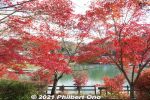
3 views
|
|
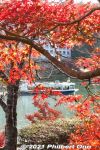
3 views
|
|
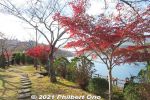
On the upper level of Sazanami Park, looking toward the tip.3 views
|
|
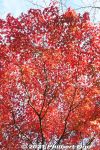
3 views
|
|
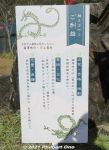
Pray to Benzaiten for success in life, passing exams, love, and art and design.3 views
|
|
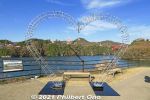
Upper level of Sazanami Park.3 views
|
|

View of Benten Island.3 views
|
|
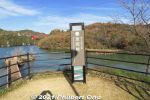
Lookout point on Sazanami Park.3 views
|
|
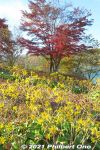
3 views
|
|
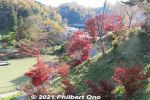
3 views
|
|
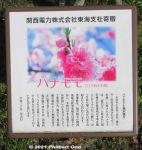
From Germany where he bought water wheels for his hydroelectric power plant, Momosuke brought Hana peach flowers (hanamomo) to Japan.3 views
|
|

This path to the temple is the main highlight lined with lots of maple trees and souvenir shops. When I visited, many of the leaves were still in transition, changing from green to yellow to red. So the gradation or triple colors were really beautifu3 views
|
|
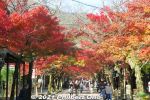
It wasn't exactly a tunnel of maple trees, but it was pretty close. On sunny days, the leaves glow. The temple is quite out of the way, but it was worth coming here.3 views
|
|
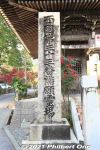
Tanigumi-san is also one of the 33 Saigoku Kannon Pilgrimage temples in western Japan (西国三十三所). It's the last temple (No. 33) on the Saigoku pilgrimage as this stone marker indicates. It's the only one not in western Japan.3 views
|
|
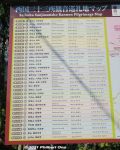
List of the 33 Saigoku Kannon Pilgrimage temples in western Japan (西国三十三所). Tanigumi-san is on the bottom of the list.3 views
|
|

Tanigumi-san (Kegonji) Hondo main worship hall.3 views
|
|
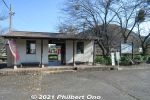
Nearest train station toTanigumi-san is Tanigumiguchi Station on the Tarumi Line. Small little train station with no staff. 3 views
|
|

This Somon Gate (総門) marks the start of the path leading to Tanigumi-san. The shuttle bus stop is slightly beyond this gate.3 views
|
|

Public restroom in a tradtional-style building.3 views
|
|

3 views
|
|
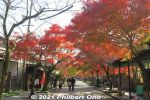
3 views
|
|
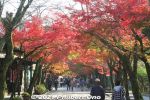
3 views
|
|
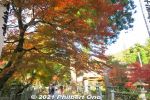
3 views
|
|
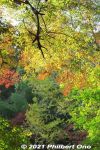
3 views
|
|
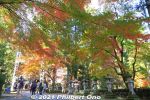
3 views
|
|
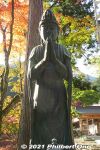
3 views
|
|
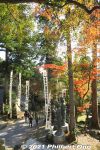
3 views
|
|
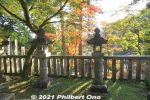
3 views
|
|
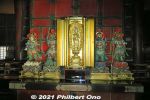
Statues at the back of the main hall.3 views
|
|
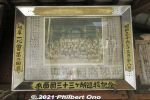
Old group photo of pilgrims who completed the Saigoku Pilgrimage here.3 views
|
|
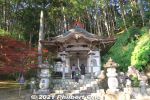
The third building pilgrims must visit here is the Mangando (満願堂) after going up 33 stone steps right behind the main hall. It houses an 11-faced Kannon statue. 3 viewsI saw a few pilgrims chant a sutra here. The interesting feature here is the tanuki stone statues flanking the Mangando on the left and right.
|
|
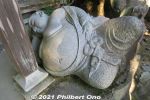
3 views
|
|

3 views
|
|
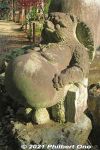
This tanuki near Mangando looks pregnant. But it cannot be pregnant because it's male. Not sure why it has an extra large stomach. No explanation.3 views
|
|

3 views
|
|
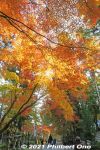
3 views
|
|
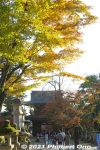
Niomon Gate3 views
|
|

Niomon Gate3 views
|
|

3 views
|
|
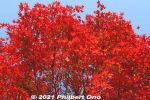
3 views
|
|
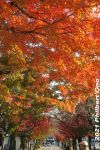
3 views
|
|

3 views
|
|

Train for Ogaki at Ibi Station.3 views
|
|
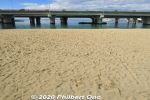
Naminoue Beach in central Okinawa. A local favorite and convenient for Naha locals in summer.3 views
|
|

Naminoue Beach in central Naha is convenient for a quick swim or sunbathing. 波の上ビーチ3 views
|
|

Naminoue beach, Naha3 views
|
|

Naminoue Beach Park.3 views
|
|
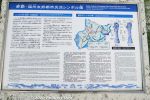
About the Naha-Fuzhou Friendship City Exchange Monuments (Ryuchu dragon pillars) in Naha, Okinawa.3 views
|
|
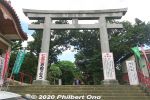
Naminoue Shrine torii.3 views
|
|
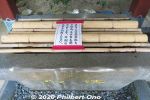
Wash basin closed as a Covid safety measure.3 views
|
|
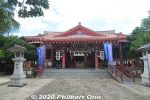
Naminoue Shrine's main hall. 波上宮 3 views
|
|
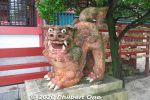
Seesaa at Naminoue Shrine.3 views
|
|
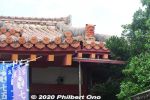
3 views
|
|
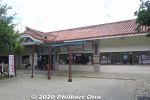
Naminoue Shrine office where you can buy charms or request prayer ceremonies.3 views
|
|
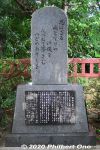
Poem by Emperor Showa at Naminoue Shrine.3 views
|
|
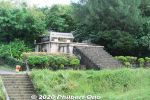
3 views
|
|
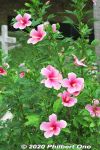
Pink hibiscus at the cemetery.3 views
|
|
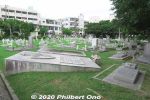
Near Tomari Port is the Tomari International Cemetery (泊外人墓地). First built in the early 19th century. Destroyed during WWII and restored in 1955. Numerous foreigners are buried here. 外国人墓地3 views
|
|

Perry Monument marking the place where he landed on June 6, 1853. The monument is within the Foreigners' Cemetery in Naha, Okinawa.3 views
|
|
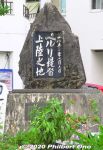
On Naha's waterfront, Commodore Perry Landing Monument. Perry first landed in Naha in May 1853 and was finally able to visit Shuri Castle on June 6, 1853 after insisting on it. Meanwhile, his crew explored the island and saw interesting things.3 views
|
|

Older photo of the monument when it looked more new. The lower plaque wasn't faded yet.3 views"Lew Chew" (Ru-chu ルーチュー), as spelled by Perry, is what the Ryukyu Kingdom called itself. There's also "Uchina" (ウチナー) which referred to the main island, but today, "uchina" usually refers to the entire prefecture of Okinawa.
|
|
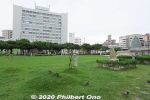
Tomarin Park next to Tomari Port. 泊緑地 3 views
|
|
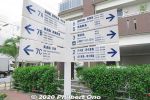
SIgns at Tomari Port.3 views
|
|

At Tomari Port, ticket office for Tokashiki island.3 views
|
|
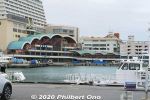
Tomari Port, Naha.3 views
|
|
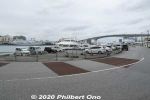
Boat dock at Tomari Port.3 views
|
|
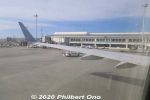
3 views
|
|
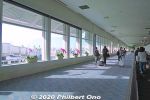
Main concourse also has orchids. Orchids in Naha Airport. They are real, not fake. They also last many years with minimal water and soil requirements. 胡蝶蘭3 views
|
|

Yui Rail Naha Airport Station platform.3 views
|
|
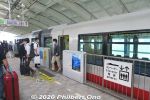
Yui Rail train at Naha Airport Station.3 views
|
|
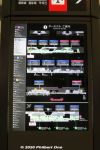
3 views
|
|

Exhibition space at Naha Airport departure gates.3 views
|
|
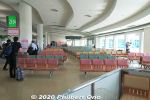
Waiting area at Naha Airport gates.3 views
|
|
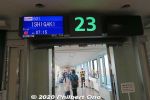
Gate 23 at Naha Airport for Ishigaki.3 views
|
|
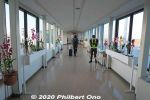
Jet way with flowers at Naha.3 views
|
|

Helicopter landing in Naha.3 views
|
|

Blue whale shark Japan Transocean Air (JTA) Boeing 737-800 plane taking off from Naha Airport.3 views
|
|
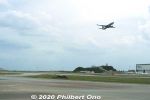
3 views
|
|
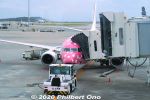
Pink whale shark Japan Transocean Air (JTA) Boeing 737-800 plane at Naha Airport.3 views
|
|

Ryukyu Air Commuter DHC8-Q400CC (DH4) turboprop plane at Naha Airport.3 views
|
|

Ryukyu Air Commuter DHC8-Q400CC (DH4) propeller plane taking off from Naha Airport.3 views
|
|

Naha Airport Domestic Terminal.3 views
|
|
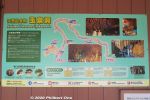
Map of Gyokusendo Cavern. Many natural features have names. After getting out of the cavern, you can go across the park toward the main gate and see the Kingdom Village.3 views
|
|
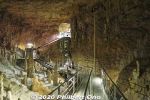
The cavern basically follows an underground stream. Tourists can walk on this walkway. It's always wet and water dripping.3 views
|
|

3 views
|
|
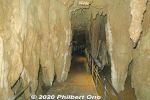
3 views
|
|
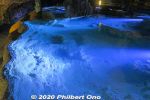
Not sure if this is the natural color or the color of the lights.3 views
|
|
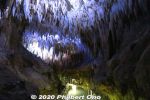
3 views
|
|
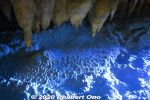
3 views
|
|
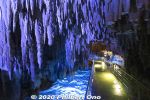
3 views
|
|
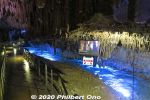
3 views
|
|
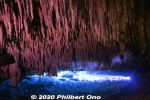
3 views
|
|

Japanese mitten crab, one of the creatures that live in the cavern. モクズガニ3 views
|
|

Freshwater goby, one of the creatures that live in the cavern. ヨシノボリ3 views
|
|

Striking reach of the habu is much wider compared to a cobra. It's 360˚ all around. Watch out for it.3 views
|
|
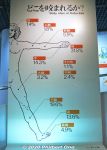
Where habu bites occur. Most common (31.8%) on the fingers, then the calf of your leg. Ouch!3 views
|
|
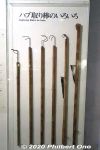
Hooked poles for catching habu. Habu are caught for making Habu-shu liquor.3 views
|
|
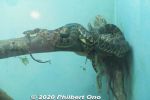
3 views
|
|
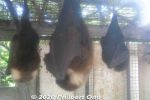
Bats sleeping.3 views
|
|
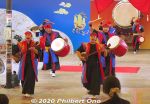
Okinawan Eisa drummers.3 views
|
|
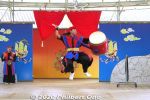
3 views
|
|

3 views
|
|
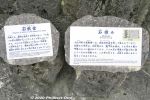
About the stone walls.3 views
|
|
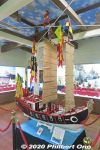
3 views
|
|

Okinawan children's toys.3 views
|
|
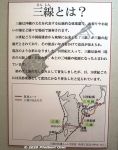
About the Sanshin, Okinawa's shamisen string instrument famous for snakeskin (not habu).3 views
|
|
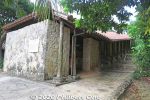
Kingdom Village also has a noborigama sloping kiln for pottery. 登り窯3 views
|
|

Glassware you can make at Ryukyu Glass Kingdom Studio.3 views
|
|
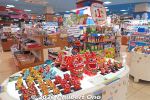
Okinawa World's gift shop.3 views
|
|
|
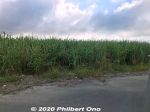
Some sugar cane in Nanjo, Okinawa.3 views
|
|
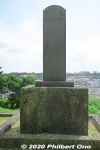
Replicated stone monument to mark the completion of the stone-paved path from Urasoe Castle to Shuri Castle in 1597. Original monument was destroyed during the World War II.3 views
|
|

About the stone monument to mark the completion of the stone-paved path from Urasoe Castle to Shuri Castle.3 views
|
|
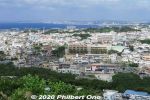
Not only that, he was a "conscientious objector" and refused to carry a gun and kill the enemy since it was against his religious beliefs. 3 viewsHe was in the war with no gun. He was a medic, so he didn't think he needed a gun. He was awarded the Medal of Honor by President Truman.
Surprisingly, the movie was not an American or Japanese production. It was Australian. Most of the actors were Australian and it was filmed in Australia. Too bad no filming in Okinawa.
|
|
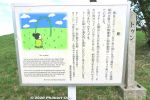
The tun was created with a pair of bamboo connected at the top to form an arch as a gate for the gods. Prayers for a rich harvest were held here.3 views
|
|
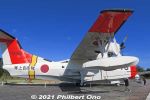
US-1A 90783 views
|
|

All the planes which first flew in Japan here in Kakamigahara.3 views
|
|
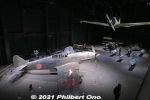
The museum's highlight piece is this restored Kawasaki Ki-61 Hien fighter prototype, the only one in the world.3 views
|
|
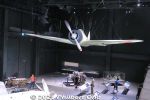
Full-size replica of Mitsubishi A6M1 Zero fighter prototype. 十二試艦上戦闘機(「零戦」試作機)(三菱A6M1) (1/1模型)3 views
|
|
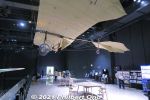
3 views
|
|
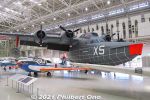
UF-XS Experimental Flying Boat (rear).3 views
|
|
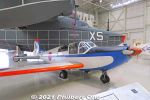
X1G1B High-Lift Research Aircraft3 views
|
|
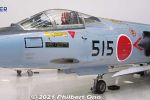
F-104J Starfighter cockpit.3 views
|
|
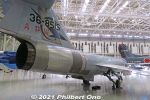
F-104J Starfighter jet exhaust.3 views
|
|
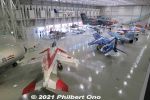
3 views
|
|
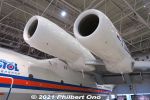
NAL Asuka STOL Research Aircraft3 views
|
|

Entering the space museum on the second floor.3 views
|
|
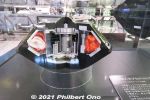
Cross section of Hayabusa II re-entry capsule. はやぶさ23 views
|
|

Small exhibition about commercial aviation.3 views
|
|
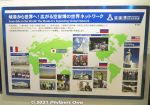
Sister aviation museums overseas.3 views
|
|
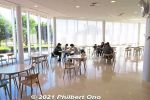
Sorahaku Cafe. No need a museum ticket to dine at this cafe. Curry, ramen, desserts, coffee, soft drinks, etc. Menu here.3 views
|
|
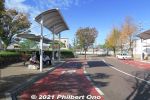
Bus stop in front of Kakamigahara Shiyakusho-mae Station. Take the No. 5 or No. 7 bus. Takes about 15–20 min. to the museum.3 views
|
|
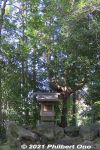
Akiba Shrine3 views
|
|

Furukama Falls and Suehiro Pond. 古釜の滝3 views
|
|
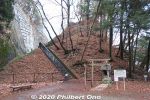
Tateiwa Scenic Point is on this small, pointy hill. 楯岩展望台3 views
|
|
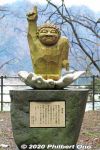
Ogre Birth Monument. Looks like a baby Buddha.3 views
|
|

Ogre Birth Monument memorializes the birth of all Seven Ogres of Good Fortune from the Tateiwa rock. "Tateiwa" means "protective rock." 楯岩3 views
|
|
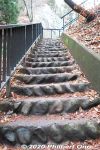
Steps up to Tateiwa Scenic Point.3 views
|
|
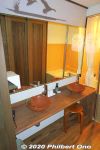
Bathroom.3 views
|
|
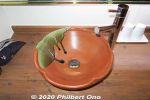
Bathroom sink made of pottery.3 views
|
|
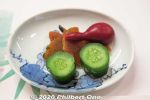
Pickles3 views
|
|

Kotokuji Temple altar in Nikko. 高徳寺(日光市)3 views
|
|
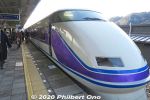
From Asakusa Station in Tokyo, take the Tobu Kinugawa Line to Kinugawa Onsen Station. By express train, it takes about 2 hr. 10 min.3 views
|
|
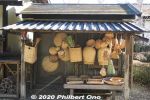
Rattan and straw products.3 views
|
|
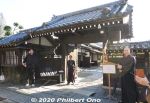
Samurai Training Institute3 views
|
|
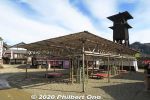
Fire tower and rest area.3 views
|
|
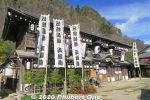
Ryogoku-za Theater3 views
|
|
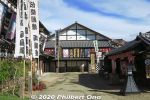
Mizugei-za Theater. We didn't have time to see any theater shows. 水芸座3 views
|
|

On the left is the Ninja Karakuri Mansion, on the right is the entrance to the ninja maze.3 views
|
|
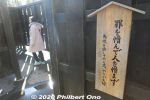
Ninja Maze3 views
|
|
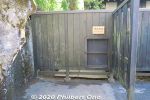
Escape door if you give up.3 views
|
|
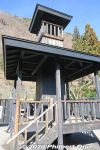
Center tower of the maze.3 views
|
|
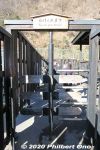
One exit.3 views
|
|
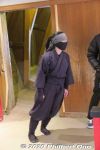
Ninja Training Hall and ninja.3 views
|
|
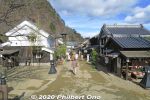
Echigoya on the left.3 views
|
|
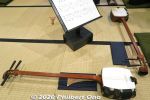
Shamisen Lesson with a real shamisen.3 views
|
|
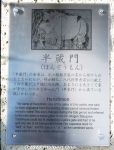
About Hanzomon Gate.3 views
|
|

About Hatago inns.3 views
|
|
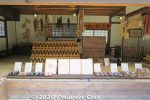
Geta clog shop. 笠下駄屋・笹山3 views
|
|
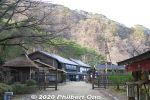
Leaving the park.3 views
|
|

Fishing boat sailing past Manazuru Peninsula.3 views
|
|

Yotei-zan as seen from Niseko Hirafu. ニセコ ヒラフ・羊蹄山3 views
|
|

Niseko Hirafu. ニセコ ヒラフ3 views
|
|

Lake Kussharo as seen from Bihoro Pass.3 views
|
|

When I visited in autumn years ago, a few Ainu dressed in colorful costumes were at the Bihoro Pass scenic point posing for photos for paying tourists. アイヌ3 views
|
|

Lake Akan at sunset.3 views
|
|
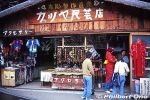
Akanko Ainu Kotan gift shop.3 views
|
|
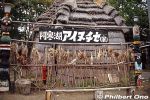
Ainu home (no longer here) was also in the Ainu village. 阿寒湖アイヌコタン3 views
|
|
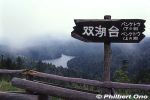
Near Lake Akan are two other small lakes, Lake Penketo (foreground) and Lake Panketo in the rear (not really visible due to fog). From Sokodai Scenic Point. 双湖台、ペンケトー3 views
|
|

The ocean seen from the JR Nemuro Line going to Kushiro.3 views
|
|

The small island in the lake is named "Kamuishu." It's the tip of a lava dome. View of Lake Mashu from Scenic Point 1. カムイシュ島3 views
|
|
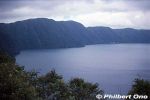
Too bad it was a cloudy day. Lake Mashu has no outflowing river.3 views
|
|
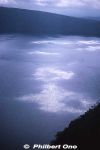
3 views
|
|
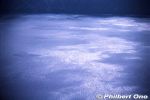
3 views
|
|
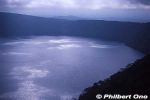
3 views
|
|
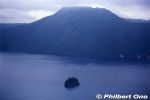
Lake Mashu and Kamuishu island.3 views
|
|

3 views
|
|

3 views
|
|

Sulphur mining ended altogether in Hokkaido in 1963.3 views
|
|
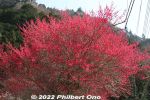
Red plum blossoms really stand out.3 views
|
|
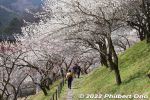
The plum grove has walking paths across the slope.3 views
|
|
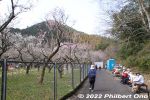
On the top of Kogesawa Bairin, there are benches and picnic area near the plum trees. 3 views
|
|
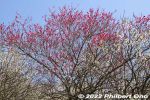
3 views
|
|

Takao Baigo stone monument at Takao Ume-no-Sato Machi-no-Hiroba.3 views
|
|
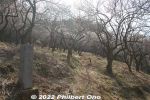
Go up the hill to see the shrine.3 views
|
|
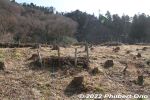
3 views
|
|
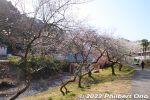
3 views
|
|

Wakoto Peninsula has this free outdoor hot spring bath on the lake shore. Open to both men and women, most bathers wear a swimsuit.3 views
|
|

Nearest train station is JR Kawayu Onsen Station. Take the Akan Bus to Kawayu Onsen to reach Lake Kussharo.3 views
|
|
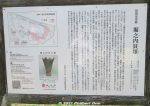
It's hard to discern, but Horinouchi Kaizuka Shell Mound is as long as 225 meters and 100 meters wide. 3 viewsPink portion in the diagram on the upper left shows where the shells, animal bones (mostly boar and deer) and other food waste were tossed on the hillsides during 4,000 to 2,500 years ago (Jomon Period). They form a horseshoe shape on the hill.
The mound was a central feature of the Jomon Period cluster of homes in this area. Since the late 19th century (Meiji Period), many digs and research on this shell mound have been conducted by archaeologists. However, there are still unknown things about mound.
|
|
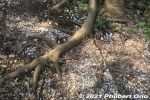
While walking through Horinouchi Kaizuka Shell Mound, we indeed saw many pieces of shell or pottery on the ground.3 views
|
|
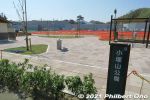
Next was Kozuka-yama Park. There are restrooms. 小塚山公園3 views
|
|

If you started the hike at Kita-Kokubun Station, Junsai-ike Pond Ryokuchi green belt park is the first substantial park where you can rest or have lunch. Large pond and cherry blossoms. じゅん菜池緑地3 views
|
|
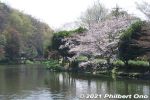
Junsai-ike Pond じゅん菜池3 views
|
|
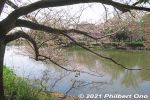
じゅん菜池3 views
|
|
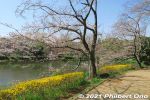
Some cherry blossoms along Junsai-ike Pond. じゅん菜池3 views
|
|
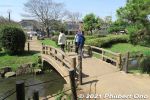
Small bridge in the middle of Junsai-ike Pond.3 views
|
|
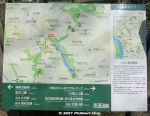
Map and where we are now.3 views
|
|
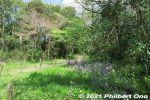
Lush trees and shrubs in Konodai Ryokuchi Park. 国府台緑地3 views
|
|
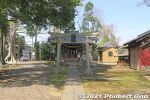
Konodai Tenmangu Shrine dedicated to Michizane, scholar deity. Stone lanterns behind the torii date from 1863. 国府台天満宮3 views
|
|
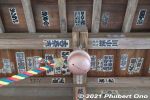
Ceiling and bell.3 views
|
|
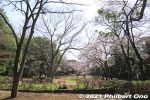
Satomi Park is the site of Konodai Castle occupied by the Satomi Clan who ruled the Boso domain in present-day Chiba during the 16th century. Almost nothing remains though. 国府台城3 views
|
|
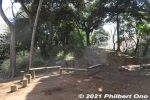
Places to sit in the park.3 views
|
|
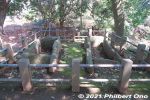
The Akedo Kofun burial mound stone coffins date from the 6th century. They were discovered in 1479. The dirt mound over the coffins fell away to expose the coffins which contained samurai armor, swords, etc. 明戸古墳石棺3 views
|
|
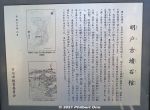
About the Akedo Kofun burial mound. The diagram shows a keyhole-shaped burial mound. The stone coffins are on the top of the round hill. This burial mound has been a noted site since the Edo Period. 明戸古墳石棺3 views
|
|
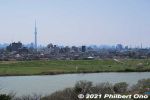
View of Edogawa River from Satomi Park. Across the river is Koiwa and Shibamata. Tokyo Skytree can also be seen. 江戸川3 views
|
|
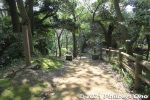
At the top of this small hill is Ichikawa city's highest point (elevation).3 views
|
|
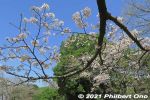
3 views
|
|
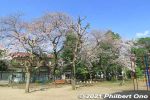
Satomi Park playground.3 views
|
|
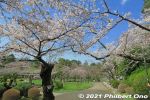
Nice cherry blossoms at Satomi Park, Ichikawa.3 views
|
|
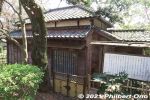
Shien-soja (紫烟草舎).3 views
|
|
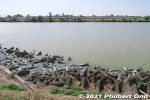
Edogawa River3 views
|
|
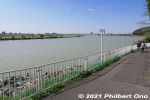
Edogawa River3 views
|
|
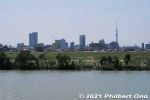
Edogawa River3 views
|
|

Old drawing of Ichikawa Sekisho. It was operated in together with staff on the opposite side (Koiwa) of the river until it was abolished in 1869. The opposite side of the river (Koiwa) also has a signboard marking the sekisho location. 市川関所跡3 views
|
|
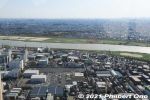
View from I-Link Town Observatory, looking west toward Edogawa River. This deck is open 9 am to 10 pm. Closed on the first Monday of the month and during Dec. 29 to Jan. 3.3 views
|
|
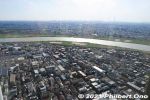
Looking west toward Edogawa River. On clear days, Mt. Fuji can also be seen.3 views
|
|
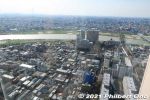
Looking west toward Edogawa River. The JR Sobu Line can be seen.3 views
|
|
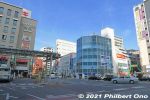
In front of Ichikawa Station, the building (Sun Plaza 55) on the left has a coffee shop and bakery operated by Yamazaki Baking.3 views
|
|
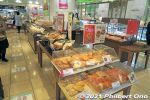
Yamazaki Plaza Ichikawa, a bakery operated by Yamazaki Baking in front of Ichikawa Station. Freshly baked in their own hometown, looks yummy.3 views
|
|
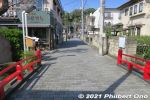
"Mamasan" is the temple's mountain name. Not the same as a mama-san operating a Japanese bar. Photo shows Mama no Tsughihashi Bridge leading to the steps going up to Guhoji Temple on a wooded hill. 真間の継橋3 views
|
|
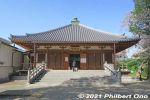
After Niomon Gate, this is the first building you see, Soshido Hall dedicated to Nichiren, founder of the Nichiren Buddhist sect. Reconstructed in 2010 on the 700th anniversary of Nichiren's death. 祖師堂 3 viewsThere are other temple buildings spread out on the hill.
|
|
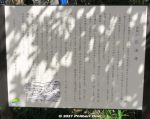
Guhoji is a Nichiren Buddhist temple founded by Priest Gyoki in 737. It's on a small hill noted for cherry blossoms and autumn foliage.3 viewsPriest Kobo Daishi (Kukai) later reconstructed and expanded the temple in 822. Tokugawa Ieyasu, before he became shogun, granted the temple ownership of its temple grounds in 1591. In 1695, Mito Komon named the temple's tea ceremony room "Henrantei" (遍覧亭). In 1888, the entire temple was destroyed by fire. The present structures were reconstructed in 1890.
|
|
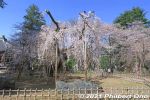
Guhoji's 400-year-old weeping cherry blossom tree is named "Fushihime Sakura." 伏姫桜3 views
|
|
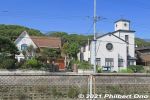
Western-style buildings along Mama River. The Christian church on the right is the Japan Evangelical Lutheran Church in Ichikawa and a National Tangible Cultural Property. 日本福音ルーテル市川教会【国登録有形文化財】3 views
|
|
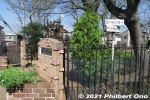
Small athletics field.3 views
|
|
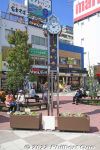
Monchicchi Clock Tower was installed in Oct. 2020 in front of JR Shin-Koiwa Station's north entrance. Tower has stained glass Monchicchi artwork. モンチッチ時計塔3 views
|
|

Monchicchi Clock Tower in front of JR Shin-Koiwa Station's north entrance. Lights up in the evenings. Good place to meetup in Shin-Koiwa. モンチッチ時計塔3 views
|
|
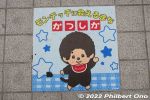
Skydeck Tatsumi pedestrian walkway floor tiles decorated with Monchicchi.3 views
|
|
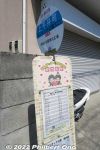
Get off here at Kami-Hiraicho stop (上平井町). Even the bus stop signs have Monchicchi.3 views
|
|
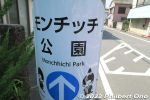
From the bus stop, follow the signs to the park entrance.3 views
|
|
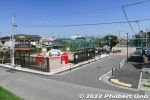
Monchicchi Park is a local public park which also serves as an emergency evacuation zone where nearby residents can seek refuge if homes are damaged in a large earthquake, etc. The new Monchicchi Zone is on the left. モンチッチ公園3 views
|
|
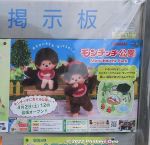
Bulletin board notice about Monchicchi Park unveiling its new expanded areas (Monchicchi Zone and Chibikko Hiroba) on April 2, 2022.3 views
|
|
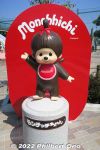
Girl Monchicchi-chan greets you.3 views
|
|
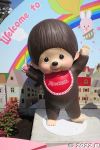
Moncchichi-kun now a dad.3 views
|
|
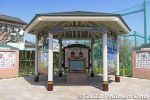
Monchicchi Mini Museum is a small open-air pavilion with a video monitor and display panels.3 views
|
|
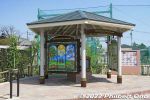
The exterior of the panels has stained glass-like artwork.3 views
|
|
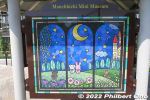
3 views
|
|

How Monchicchi was born.3 views
|
|

3 views
|
|
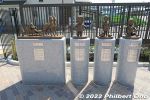
The new Monchicchi Zone is adorned with Sekiguchi doll statues.3 views
|
|

Bronze statues of old Sekiguchi dolls complete with background info.3 views
|
|
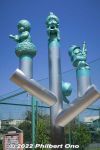
Water fountain Monchicchi. This Monchicchi tower will spew water in summer.3 views
|
|
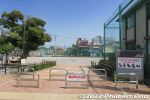
Entrance to the main area of Monchicchi Park. As an emergency evacuation zone, this area has a storehouse storing emergency provisions, manholes for makeshift toilets, wash basins, rainwater tank, 3 viewsand a few benches which can be converted into wood-burning stoves.
|
|
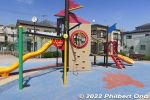
Playground equipment with a Monchicchi silhouette on the ground.3 views
|
|

Monchicchi rocker3 views
|
|
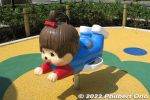
Monchicchi-chan rocker3 views
|
|
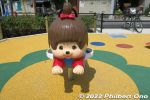
Monchicchi-chan rocker3 views
|
|
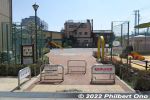
Back entrance.3 views
|
|

The first Tonami Tulip Fair was held in 1952 to commemorate the formation of Tonami Town upon the merger of adjacent villages. The fair moved to this park in 1964. Emperor Hirohito and empress Nagako visited in 1958. 3 views
|
|

3 views
|
|

3 views
|
|
| 71054 files on 282 page(s) |
 |
 |
274 |  |
 |
|